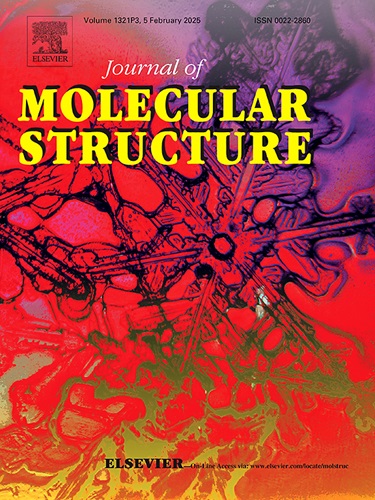Physicochemical studies of asarylaldehyde crosslinked type-I collagen fibrils
IF 4
2区 化学
Q2 CHEMISTRY, PHYSICAL
引用次数: 0
Abstract
The self-assembly of collagen in vitro differs from in vivo mainly in packing densities, mechanical strength, diameter and porosity depending on pH and temperature. The use of collagen in biomedical and pharmaceutical industry necessitates the need for tuned-assembly of collagen and understanding the mechanical and chemical properties of the tuned collagen-fibrils. In this study, we have focused on non-toxic crosslinking of collagen by introducing asarylaldehyde, a compound found in carrot seed, into the fibrillation process of type-I collagen and explored the mechanical and chemical properties of that tuned assembly. Upon interaction of collagen with asarylaldehyde, the fibrillisation process accelerated and showed highest rate of fibril formation at 1:100 molar-ratio. The tuned assembly shows thixotropy and LVR is increased up to 1:25 molar-ratio compared to native fibrils. The fibril diameter is increased and D-periodicity is decreased for 1:100 molar-ratio as observed through SEM images. The negative Gibbs free energy and binding constant values confirm there is a strong binding attraction between tropocollagen and the asarylaldehyde molecule. MTT assay and fluorescence staining displayed the biocompatible nature of the prepared scaffold. The known cell proliferation as well as bone metabolism properties of asarylaldehyde may value-add the prepared scaffold for tissue engineering applications.
细辛醛交联i型胶原原纤维的理化研究
胶原蛋白在体外的自组装与在体内的不同主要表现在包装密度、机械强度、直径和孔隙度等方面,这取决于pH值和温度。胶原蛋白在生物医学和制药工业中的应用需要对胶原蛋白进行调整组装,并了解调整后的胶原原纤维的机械和化学性质。在这项研究中,我们将胡萝卜籽中的一种化合物细丁醛引入到i型胶原蛋白的纤颤过程中,重点研究了胶原蛋白的无毒交联,并探索了该调谐组装体的机械和化学特性。当胶原蛋白与细辛醛相互作用时,纤维化过程加速,在1:10摩尔比下纤维形成率最高。调整后的组装显示触变性和LVR增加到1:25摩尔比相比,天然原纤维。通过扫描电镜观察到,当摩尔比为1:100时,纤维直径增大,d -周期性减小。负的吉布斯自由能和结合常数值证实了胶原蛋白与细辛醛分子之间存在很强的结合吸引力。MTT试验和荧光染色显示制备的支架具有生物相容性。细辛醛已知的细胞增殖和骨代谢特性可能为制备的支架在组织工程中的应用增加价值。
本文章由计算机程序翻译,如有差异,请以英文原文为准。
求助全文
约1分钟内获得全文
求助全文
来源期刊

Journal of Molecular Structure
化学-物理化学
CiteScore
7.10
自引率
15.80%
发文量
2384
审稿时长
45 days
期刊介绍:
The Journal of Molecular Structure is dedicated to the publication of full-length articles and review papers, providing important new structural information on all types of chemical species including:
• Stable and unstable molecules in all types of environments (vapour, molecular beam, liquid, solution, liquid crystal, solid state, matrix-isolated, surface-absorbed etc.)
• Chemical intermediates
• Molecules in excited states
• Biological molecules
• Polymers.
The methods used may include any combination of spectroscopic and non-spectroscopic techniques, for example:
• Infrared spectroscopy (mid, far, near)
• Raman spectroscopy and non-linear Raman methods (CARS, etc.)
• Electronic absorption spectroscopy
• Optical rotatory dispersion and circular dichroism
• Fluorescence and phosphorescence techniques
• Electron spectroscopies (PES, XPS), EXAFS, etc.
• Microwave spectroscopy
• Electron diffraction
• NMR and ESR spectroscopies
• Mössbauer spectroscopy
• X-ray crystallography
• Charge Density Analyses
• Computational Studies (supplementing experimental methods)
We encourage publications combining theoretical and experimental approaches. The structural insights gained by the studies should be correlated with the properties, activity and/ or reactivity of the molecule under investigation and the relevance of this molecule and its implications should be discussed.
 求助内容:
求助内容: 应助结果提醒方式:
应助结果提醒方式:


